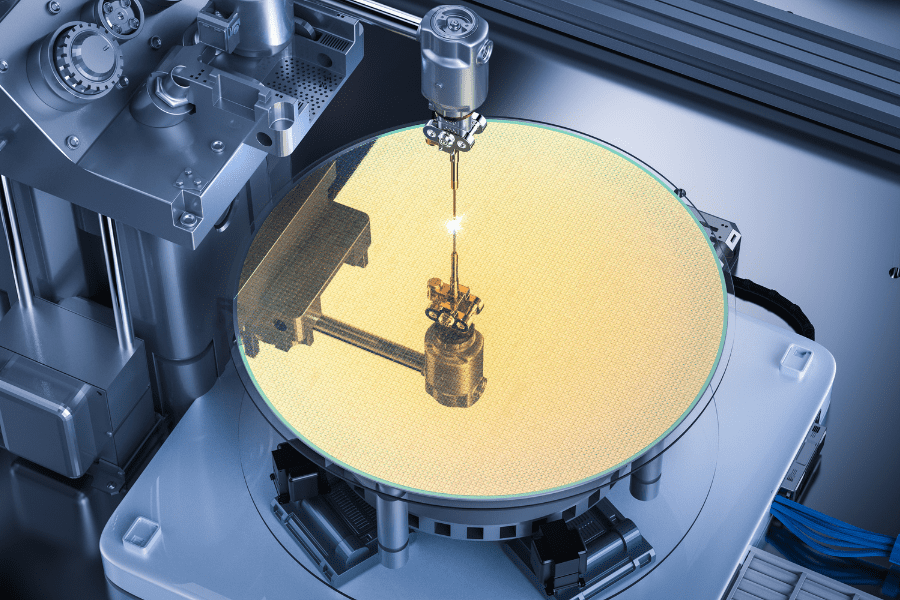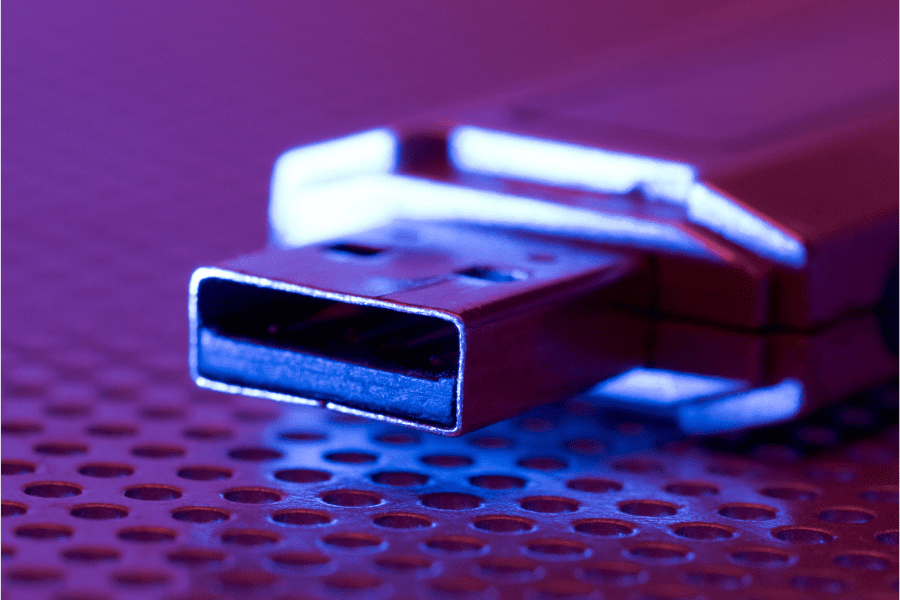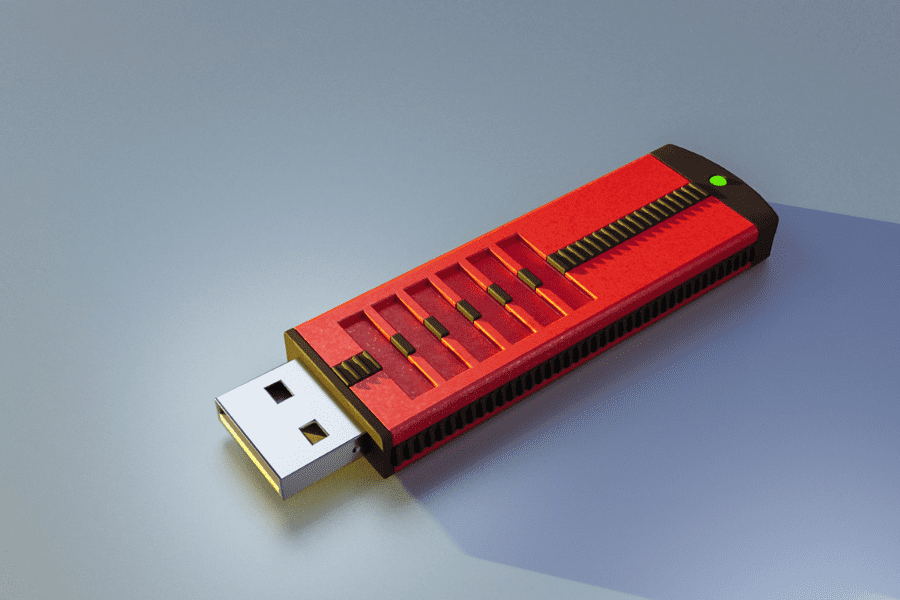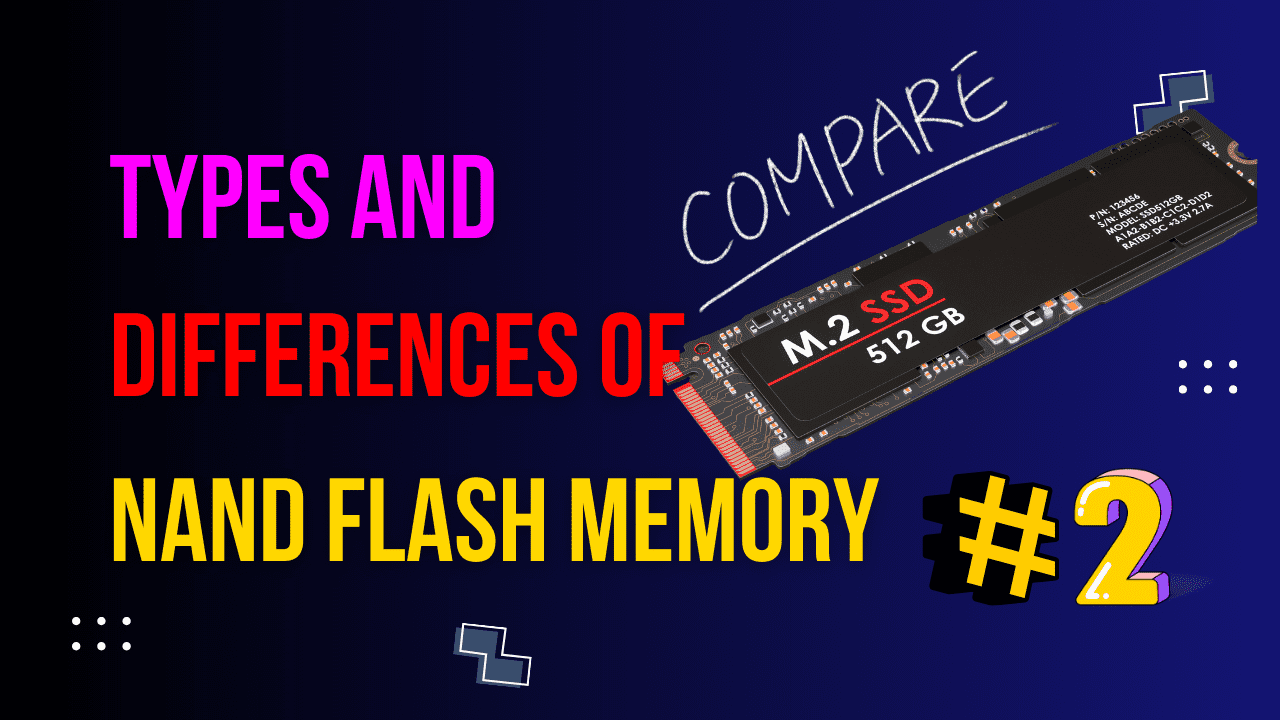Table of Contents
SLC NAND Flash Memory

Single-Level Cell, or SLC, is the simplest type of NAND flash memory technology. Each cell can only store one bit of data. This part will talk about the features, benefits, pros and cons, and uses of SLC NAND flash memory that make it unique and useful for some tasks.
Good things and features
High-Speed Operations: When it comes to NAND flash types, SLC flash memory has the fastest read and write speeds. Its simplicity makes it easier to read and write data quickly, which is important for high-performance computing apps.
Outstanding longevity: SLC flash memory has the best longevity, as each cell can withstand up to 100,000 write cycles. Because it lasts a long time, it’s a great choice for places where memory cells are updated often.
Consistent Performance: Unlike its multi-bit peers, SLC performs the same way in all kinds of operating situations. It doesn’t lose speed as quickly over time, even when it’s being used a lot.
What Are the Pros and Cons?
Pros:
- Faster and more quick than before.
- The strongest stamina, which means it will last longer.
- Performance that doesn’t change, so it can be trusted for important tasks.
Cons:
- It costs a lot per gigabyte because it stores less data, which makes it less cost-effective for consumer goods.
- Not much space for storage because each cell can only hold one bit of data; bigger amounts of data need more room.
Useful for Examples
SLC NAND flash memory is mostly used in situations where speed and dependability are essential
Industrial Applications: SLC’s longevity and operational integrity make it a good choice for devices that work in harsh conditions, like medical equipment, car electronics, and industrial control systems.
corporate Solutions: SLC NAND is used in high-end corporate storage solutions like computers and data centers because it is reliable even when it is being used a lot all the time.
Critical Systems: SLC NAND flash memory is often used in networking infrastructure and embedded systems, as well as other places where data security and quick access are very important.
Even though it costs more, SLC NAND flash is the best choice for situations where performance and durability are more important than cost. SLC NAND flash is an important part of today’s technology world because it supports the backbone of vital infrastructure and high-performance computers.
MLC NAND Flash Memory

MLC (Multi-Level Cell) NAND flash memory can hold twice as much data as SLC NAND flash because each cell can hold two bits of data. This part goes into detail about the features, pros, cons, and best uses of MLC NAND flash memory, giving you a better idea of its place in the world of storage technology.
Good things and features
- More storage space: Because MLC NAND stores two bits of data per cell, it can hold more data than SLC in the same amount of space. This makes it a cheaper option for needs that need more storage space.
- Balanced Performance: MLC NAND has a good mix between read/write speeds and endurance, making it good for many individual and some business uses.
- Cost-Effectiveness: MLC flash has a lower cost per gigabyte than SLC flash because it stores more data per unit area. This makes it a good choice for most storage devices.
What Are the Pros and Cons?
Pros:
- The cost per gigabyte goes down because there is more storage room in the same amount of area.
- Good enough performance for many household products and some business storage needs.
- It’s more cost-effective than SLC, so it can be used by more people.
Cons:
- It has less stamina than SLC; each cell can only handle about 3,000 to 10,000 write cycles.
- Because writing multiple bits to a single cell is more complicated than writing to SLC, it has slower write speeds.
- When there are a lot of tasks to do all the time, performance can drop faster than with SLC.
Useful for Examples
When you need a mix between price, capacity, and speed, MLC NAND flash memory is the way to go:
- Consumer electronics: It’s commonly used in high-end USB flash drives, personal computers, and solid-state drives (SSDs) because users want quick entry times and low prices.
- Level 1 Enterprise Storage: MLC SSDs are used in some business settings that need faster speed than hard disk drives can provide but don’t need the extreme durability of SLC NAND.
- Mobile Devices: MLC’s large capacity and low cost make it a good choice for tablets and smartphones because it gives them plenty of space for apps, pictures, and movies without making the device too expensive.
This type of flash memory, MLC NAND, is a solution that works for most individual and some business uses. It’s a useful option for people who want more storage space and good speed without having to pay the high price of SLC NAND flash
TLC NAND Flash Memory

Triple-Level Cell (TLC) NAND flash memory can hold three bits of information in each cell. This technology is a big step forward in increasing storage density while also lowering costs. It is becoming a more popular choice for a wide range of consumer storage goods.
Good things and features
- A lot of storage space: TLC NAND flash, which stores three bits per cell, greatly increases storage capacity without taking up more room. This makes it possible for smaller storage devices to hold more data.
- Cost-effectiveness: TLC NAND flash has a lower cost per gigabyte than both SLC and MLC because it stores more data per cell. This makes it the most cost-effective choice for large storage needs.
- Adoption by Many: Because it is cheap and has a lot of space, TLC NAND is used in a lot of consumer devices, like SSDs, smartphones, and tablets, where it provides enough space for apps, media, and papers.
What Are the Pros and Cons?
Pros:
- Lowest price per gigabyte, which makes big storage devices more accessible to most people.
- Performance that is good enough for most consumer apps, such as everyday computer and mobile device use.
- Allows the creation of SSDs with large storage capacities that are on par with or even greater than standard hard drives.
Cons:
- TLC NAND usually only lasts between 500 and 3,000 write cycles per cell, which makes it less ideal for settings with a lot of writing.
- Being able to handle three bits per cell makes it harder to write quickly, especially as the drive fills up.
- May need more complex mistake correction and wear-leveling methods to keep the data safe and make the storage device last longer.
Useful for Examples
TLC NAND flash memory works best in situations where high storage volume and low cost are very important, and where slower write speeds and shorter lifespans are okay:
- Consumer Solid-State Drives: These are used for everyday working, games, and storing video. They offer fast read speeds and big capacities at a lower price.
- Mobile Devices: Smartphones and tablets use TLC NAND to store a lot of apps, pictures, movies, and other things without making the device much more expensive.
- USB Flash Drives and Memory Cards are cheap, high-capacity ways to store and share data that are popular with both regular people and professional photographers and filmmakers.
TLC NAND flash memory has become an important part of user storage because it meets both the needs for affordability and quantity. Its importance in today’s digital storage world is shown by the fact that it makes a lot of different high-capacity, low-cost storage options possible.
In the next article, we will compare each NAND flash memory, find out how it is developing, and which memory is right for you.
Discover More
If this article made you happy and taught you something, I’m sure our next article will do the same for you. Each piece is carefully written to help you understand things better and enjoy reading more. So, to keep exploring and having fun, just click on this link to go to our next story.
Types and differences of NAND Flash Memory. Part 1 – ReViewMaster DEN (rvmden.com)
Choosing Your File System Wisely: NTFS vs FAT32 vs exFAT Compared – ReViewMaster DEN (rvmden.com)



